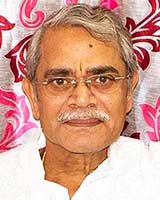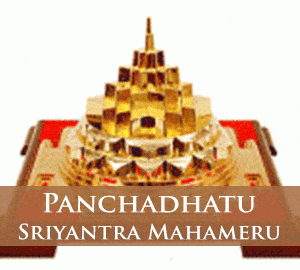The haughty conduct of the Vijayanagar army kindled the long-standing, though smouldering, hostility of the Sultanates of the Deccan against Vijayanagar, and all, with the exception of that of Berar, joined in a coalition against it, which was cemented by matrimonial alliances. The allied Deccan Sultan fought against Vijayanagar on the 23rd January, 1565, at a site marked by the two villages of Raksas and Tagdi. This battle resulted in the defeat of the huge Vijayanagar army with immense losses. “The victors,” writes the author of Burhan-i-Ma’asir, “captured jewels, ornaments, furniture, camels, tents, camp-equipage, drums, standards, maidservants, menservants, and arms and armour of all sorts in such quantity that the whole army was enriched.” “The plunder was so great,” notes Ferishta, “that every private man in the allied army became rich in gold, jewels, tents, arm, homes and slaves, the kings permitting every person to retain what he acquired, reserving the elephants only for their own use.” Husain Nazim Shah killed Rama Raya with his own hand and exclaimed: ” Now I am avenged of thee! Let God do what He will to me.” The magnificent city of Vijaynagar was sacked and deprived of its splendour by the invading army.
The so-called battle of Talikota is indeed one of the decisive battles in the history of India. It destroyed the chance of Hindu supremacy in the south, which was left open to the invasions of the rulers of a new Turkish dynasty, till the rise of the Marathas power in the seventeenth century. Undoubtedly the battle did vital damage to the Vijayanagar Empire, but recent researches have proved that it did not disappear altogether as a result of it. “Talikota,” remarks a modern writer aptly, “was the climacteric, but not the grand climacteric of the Vijayanagar Empire.” In fact, the Empire continued to exist till the early part of the seventeenth century under the rulers of the Aravidu dynasty, “before it got weakened and dismembered–weakened by the constant invasions from the north and dismembered by the dissatisfaction and rebellion of the viceroys within”.
The victorious Sultanates did not ultimately gain much as a result of this battle. Their alliance was soon dissolved and there was a recrudescence of mutual jealousy. This afforded the Vijayanagar Empire the opportunity for recuperation under Rama Raya’s brother, Tirumala. He returned to Vijayanagar after the Muslims had left it, but after a short stay there went to Penugonda, and restored the prestige and power of the Empire to such an extent as to be able to interfere in the affairs of the Muslim kingdoms. Towards the end of his reign, in about A.D. 1570, he dispensed with the phantom of the nominal ruler, Sadasiva, and usurped the throne for the Aravidu dynasty to which he belonged. His son and successor, Ranga II, continued after him his policy of increasing the efficiency of the Empire. Ranga II was succeeded about A.D. 1586 by his brother, Venkata II, who had his headquarters at Chandragiri and died after a glorious reign in A.D. 1614. He may be regarded as the last great ruler of Vijayanagar, who kept the Empire intact with the exception that in A.D. 1612 Raja Oedyar founded, with his permission, the kingdom of Mysore, on the extinction of the viceroyalty of Srirangapatan. His death was the signal for the dismemberment of the Empire. It was followed by a war of succession, and the consequent rise of disintegrating forces. These could not be checked by Ranga III, the last important ruler of Vijayanagar, in spite of his best attempts, owing to the selfish attitude of the rebel vassals of the Empire and the ambition of the Muslim States of Bijapur and Golkunda. Thus the Hindu feudatories of the Vijayanagar Empire proved to be her enemies in the long run. Their ” insane pride, blind selfishness, disloyalty and mutual dissensions ” largely facilitated the conquest of the Hindu Deccan by the Muslim States of Bijapur and Golkunda. Further, subordinate viceroys, like the Chiefs of Seringapatam and Bednur (Keladi, Ikkeri), and the Naiks of Madura and Tanjore, carved out independent kingdoms for themselves.
Splendour and Wealth of Vijayanagar
Foreign travellers who visited India during the fifteenth and sixteenth centuries have left glowing accounts of the Empire of Vijayanagar. The city of Vijayanagar was encompassed by massive fortifications and was of enormous size. The Italian traveller, Nicolo Conti, who visited it about A.D. 1420 writes: “The circumference of the city is sixty miles; its walls are carried up to the mountains and enclose the valleys at their foot, so that its extent is thereby increased. In this city there are estimated to be ninety thousand men fit to bear arms. . . . The King is more powerful than all the other kings of India.” ‘Abdur Razzaq, who came to India from Persia and went to Vijayanagar in A.D. 1442-1443, observes: “The country is so well -populated that it is impossible in a reasonable space to convey an idea of it. In the King’s treasury there are chambers with excavations in them, filled with molten gold, forming one mass. All the inhabitants of the country, whether high or low, even down to the artificers of the bazar, wear jewels and gilt ornaments in their ears and around their necks, arms, wrists and fingers.” Domingos Paes, a Portuguese, who has recorded a detailed description of Vijayanagar, writes: “Its King has much treasure and many soldiers and many elephants, for there are numbers of these in this country. . . . In this city you will find men belonging to every nation and people, because of the great trade which it has and the many precious stones there, principally diamonds. This is the best provided city in the world, and is stocked with provisions such as rice, wheat, grams, Indian corn, and a certain amount of barley and beans, moong, pulses, horse-grain and many other seeds which grow in this country, which are the food of the people, and there is a large store of these and very cheap. The streets and markets are full of laden oxen without count.. ” Edoardo Barbosa, who was present in India in A.D. 1516,describes Vijayanagar as ‘ of great extent, highly populous and the seat of an active commerce in country diamonds, rubies from Pegu, silks of China and Alexandria, and cinnabar, camphor, musk, pepper and sandal from Malabar”.











